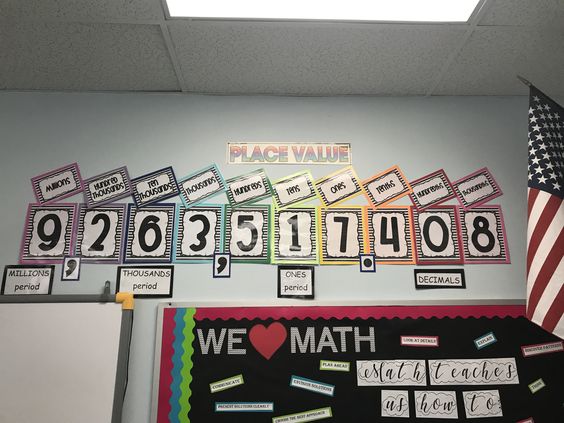Introduction:
Place value is a fundamental concept in mathematics that helps children understand the numeric value of each digit within a number. This skill is crucial for mathematical reasoning, problem-solving, and overall development of mental calculation abilities. Anchor charts can serve as an excellent tool to teach and reinforce the understanding of place value to young learners. Here are 17 different anchor charts to effectively teach place value.
1. Place Value Chart:
Create a simple chart displaying units, tens, and hundreds columns, and provide examples of numbers broken down into their individual place values.
2. Expanded Form Representation:
Showcase how numbers can be represented in their expanded form by breaking them down into separate digits multiplied by their respective place values.
3. Base Ten Blocks:
Utilize base ten block visuals to demonstrate place values (ones, tens, and hundreds) in various numbers.
4. Number Lines:
Use number lines to help students visualize the position of numbers in relation to their place values.
5. Comparing Numbers:
Design a chart with various examples highlighting different ways to compare numbers based on their place values.
6. Rounding Numbers:
Explain rounding rules accompanied by illustrative examples that depict rounding up and down based on particular digits’ place values.
7. Decimal Place Value Chart:
Present decimal place values (tenths, hundredths, etc.) on a similarly structured chart as with whole number place values.
8. Adding & Subtracting:
Demonstrate examples of adding and subtracting numbers through adherence to proper alignment of similar place values.
9. Place Value Puzzles:
Incorporate puzzles where students match numbers with corresponding base ten block representations or written descriptions highlighting specific digit’s place value.
10. Greater Than, Less Than:
Teach the use of ‘greater than’ and ‘less than’ symbols when comparing digit values in specific places within a number.
11. Place Value Houses:
Create cute house illustrations, with each representing a place value. This engaging anchor chart helps students visualize the concept of ones, tens, and hundreds.
12. Multiply & Divide by Powers of 10:
Provide examples that demonstrate the connection between multiplying and dividing by powers of 10 and movement of digits within a number’s place values.
13. Identifying Digits’ Values:
Use arrows to pinpoint specific digits in numbers and identify their corresponding values based on their place value.
14. Place Value Relationships:
Explain patterns between various place values by comparing values of neighboring digits through examples.
15. Interactive Flip Chart:
Design a flip chart that allows students to manipulate digit cards to build numbers by placing them into appropriate place value columns.
16. Comprehensive Place Value Review:
Combine multiple concepts within a single anchor chart, covering both whole numbers and decimal place values, including expanded form representation and base ten blocks.
17. Scientific Notation:
Introduce scientific notation—especially valuable for large or small numbers—showing how to rewrite numbers using exponents and their relationship with place values.
Conclusion
No matter a child’s learning style or current understanding of place value, these 17 anchor charts provide engaging visuals and hands-on opportunities to teach critical numeracy skills effectively. As students progress through mathematical education, these foundational skills will serve as an essential building block for future mathematical success.





